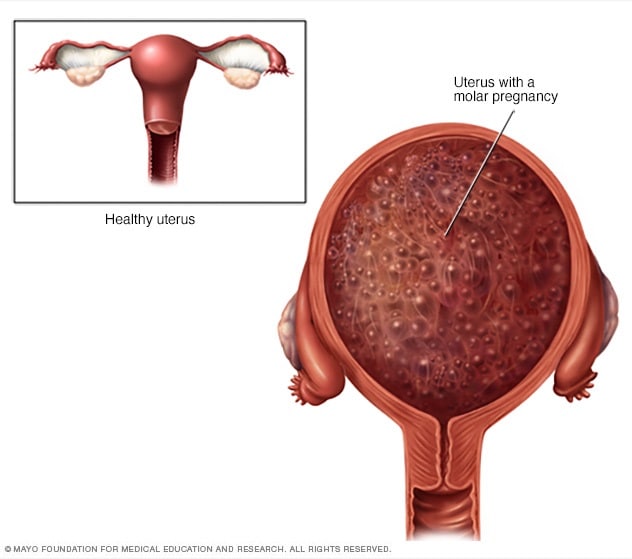
Symptoms of a Molar Pregnancy
A molar pregnancy, also known as a gestational trophoblastic disease (GTD), is a rare but serious condition that occurs when the placenta develops abnormally. The placenta is the organ that provides nutrients and oxygen to the developing fetus. In a molar pregnancy, the placenta becomes a mass of cysts and does not develop into a fetus.
Molar pregnancies are classified into two types:
- Complete molar pregnancy: This type occurs when there is no fetal tissue present.
- Partial molar pregnancy: This type occurs when there is some fetal tissue present, but it is abnormal.
Symptoms of a molar pregnancy
The symptoms of a molar pregnancy can vary depending on the type of pregnancy. However, some of the most common symptoms include:
- Vaginal bleeding: This is the most common symptom of a molar pregnancy. The bleeding may be heavy or light, and it may occur at any time during the pregnancy.
- Pelvic pain: This pain may be sharp or dull, and it may be located in the lower abdomen or back.
- Nausea and vomiting: These symptoms are common in early pregnancy, but they may be more severe in a molar pregnancy.
- High blood pressure: This is a serious symptom that can lead to complications such as preeclampsia.
- Preeclampsia: This is a condition that is characterized by high blood pressure and protein in the urine. It can be a serious complication of a molar pregnancy.
- Thyroid problems: These problems can occur in a molar pregnancy because the placenta produces hormones that can affect the thyroid gland.
Diagnosis of a molar pregnancy
A molar pregnancy is diagnosed based on the symptoms and a physical examination. Your doctor may also order one or more of the following tests:
- Ultrasound: This test can show the abnormal development of the placenta.
- Blood test: This test can measure the levels of hormones that are produced by the placenta.
- Biopsy: This test involves removing a small sample of tissue from the placenta for examination under a microscope.
Treatment of a molar pregnancy
The treatment for a molar pregnancy is to remove the abnormal placenta. This is usually done with a procedure called a dilation and curettage (D&C). During a D&C, your doctor will insert a thin tube into your uterus and use a curette to scrape away the abnormal tissue.
After a molar pregnancy, you will need to have regular follow-up appointments with your doctor to make sure that the abnormal tissue has been completely removed and that you are not at risk for developing other complications.
Prognosis for a molar pregnancy
The prognosis for a molar pregnancy is generally good. Most women who have a molar pregnancy are able to have a healthy pregnancy in the future. However, there is a small risk of developing a recurrent molar pregnancy or other complications.
If you think you may have a molar pregnancy, it is important to see your doctor right away. Early diagnosis and treatment can help to improve the prognosis.